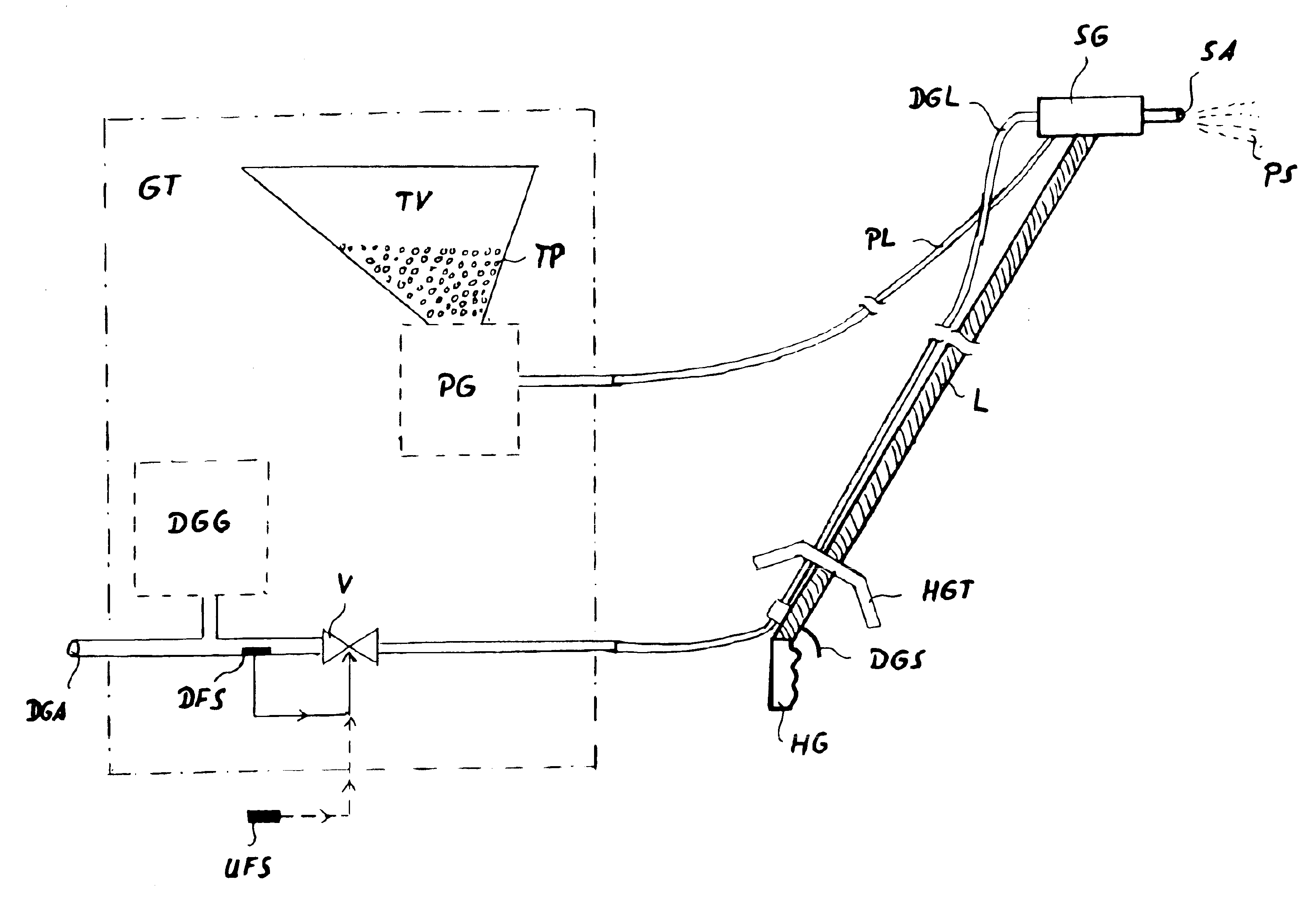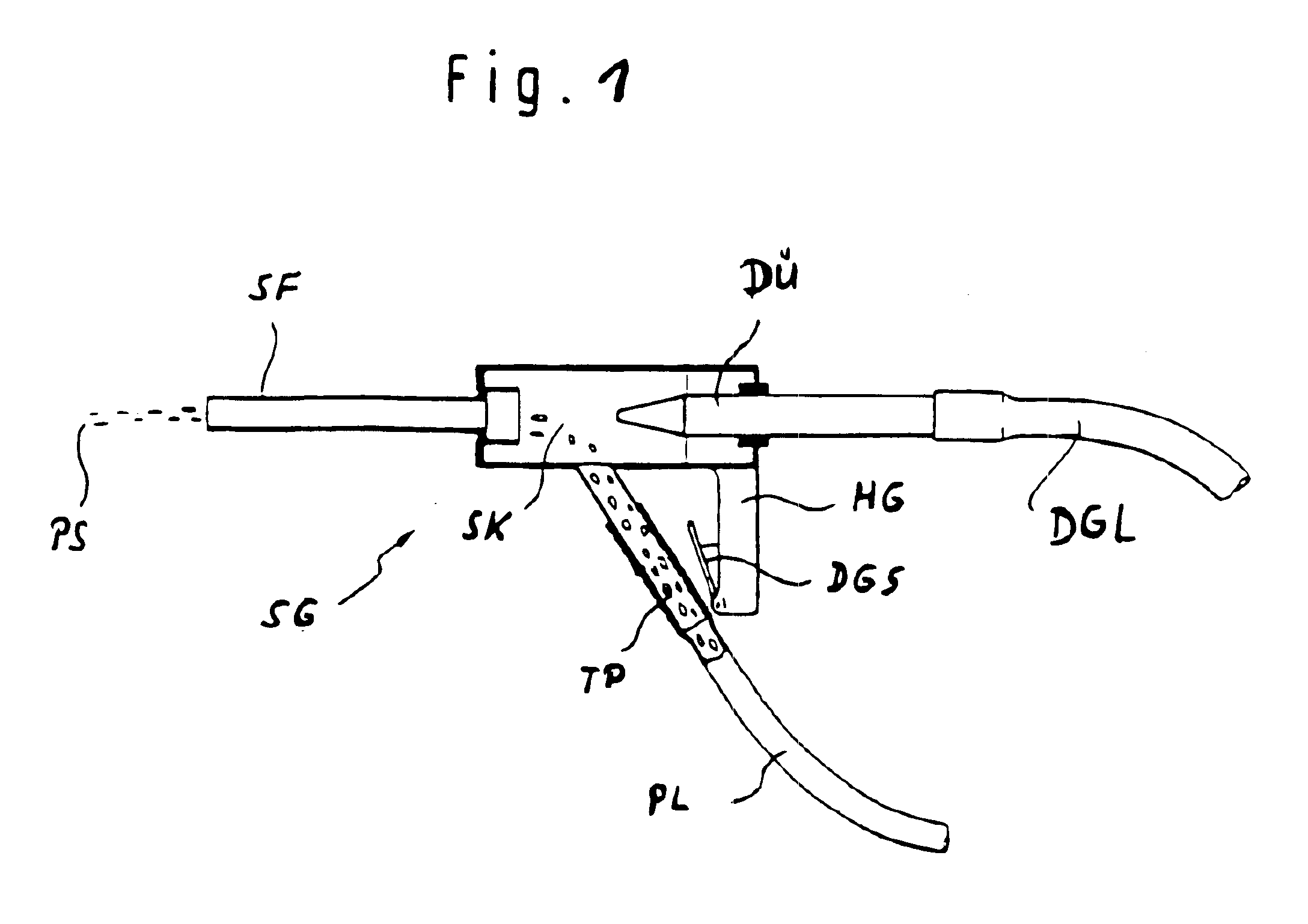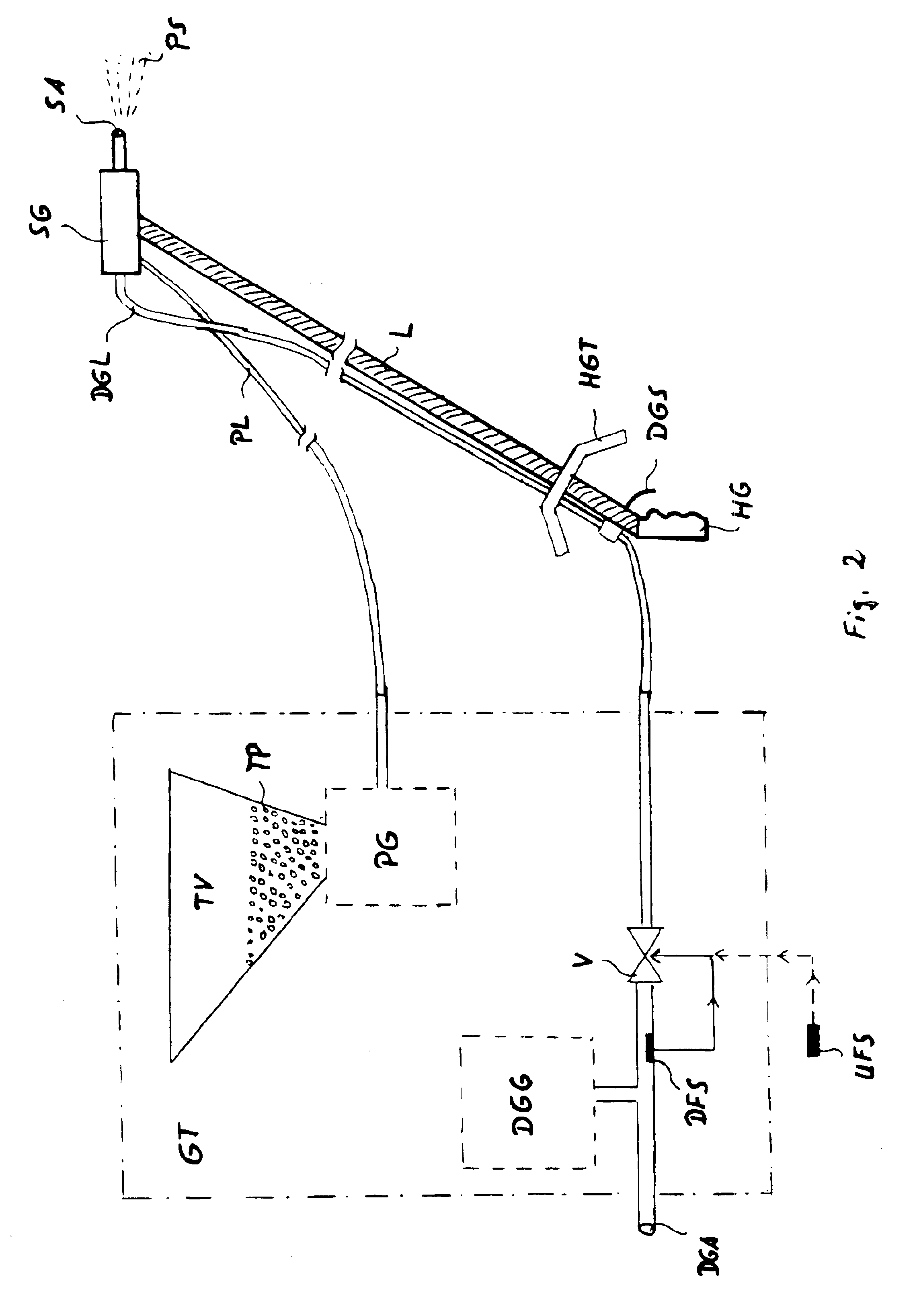Method and device for cleaning high-voltage carrying installation component parts
a cleaning method and installation technology, applied in the direction of cleaning process and apparatus, water supply installation, gas/liquid distribution and storage, etc., can solve the problems of reducing the isolator's isolator's isolator effect, contaminated components in electric power supply facilities, and contaminated components in transformers and switchboard stations, so as to ensure the safety of the installation and the personal protection of the cleaning personnel, and improve the effect of safety
- Summary
- Abstract
- Description
- Claims
- Application Information
AI Technical Summary
Benefits of technology
Problems solved by technology
Method used
Image
Examples
Embodiment Construction
The figures are not true to scale for clarity reasons.
The heart of each device for cleaning with dry-ice particles is the jet generator that produces the cleaning two-phase jet consisting of the pressure gas as carrier medium and the carried dry-ice particles. Following, it is simply designated as particle jet.
FIG. 1 depicts a jet generator as it is known from prior art. It can be employed as a component of the inventive device. A pressure gas is provided via a pressure-gas line DGL (a tube, e.g.), dry-ice particles TP are provided via a particle line PL. Through a nozzle DÜ the pressure gas emerges into the jet chamber SK. The thereby highly increased velocity of flow generates a partial vacuum in the jet chamber SK. Due to said vacuum dry-ice particles TP are sucked via the particle line PL, dragged into the pressure gas stream and carried by it further along. Then, the particle jet PS consisting of pressure gas as carrier medium and dry-ice particles leaves through the jet emitti...
PUM
| Property | Measurement | Unit |
|---|---|---|
| voltage | aaaaa | aaaaa |
| sublimation point | aaaaa | aaaaa |
| length | aaaaa | aaaaa |
Abstract
Description
Claims
Application Information
 Login to View More
Login to View More - R&D
- Intellectual Property
- Life Sciences
- Materials
- Tech Scout
- Unparalleled Data Quality
- Higher Quality Content
- 60% Fewer Hallucinations
Browse by: Latest US Patents, China's latest patents, Technical Efficacy Thesaurus, Application Domain, Technology Topic, Popular Technical Reports.
© 2025 PatSnap. All rights reserved.Legal|Privacy policy|Modern Slavery Act Transparency Statement|Sitemap|About US| Contact US: help@patsnap.com



